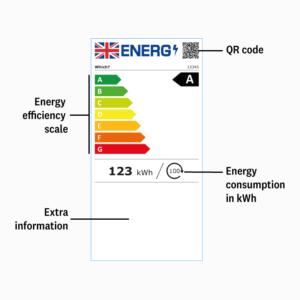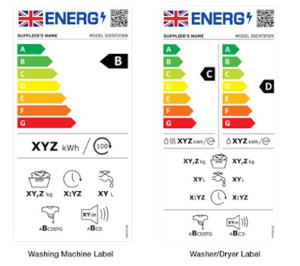Energy Efficient TV Technology


Energy Efficient TV Technology
As technology advances, energy efficiency has become a crucial consideration in various aspects of our lives, including the electronics we use. When it comes to televisions, choosing an energy-efficient option not only helps reduce your carbon footprint but also saves you money on energy bills. In this article, we will explore the top most energy-efficient TV technologies available in the UK in 2023. Let’s dive in!
LED (Light Emitting Diode) TV technology has gained popularity in recent years due to its energy efficiency. LED TVs use light-emitting diodes to illuminate the screen, consuming less power compared to traditional LCD TVs. They are designed to be highly efficient, producing bright and vibrant images while minimizing energy consumption. LED TVs are widely available in the UK market and offer a range of sizes and features to suit different preferences and budgets.
OLED (Organic Light Emitting Diode) TVs are known for their exceptional picture quality and energy efficiency. Unlike LED TVs that require a backlight, OLED TVs utilize individual organic pixels that emit their own light. This allows for precise control over each pixel, resulting in deep blacks, vibrant colors, and superior contrast. OLED TVs are renowned for their energy efficiency as they consume less power when displaying dark scenes. Although OLED TVs tend to be more expensive, their energy-saving capabilities make them a compelling option for those seeking both visual excellence and efficiency.
QLED (Quantum Dot LED) technology is another energy-efficient option available in the UK market. QLED TVs use quantum dots, which are microscopic semiconductor particles, to enhance color accuracy and brightness. They also feature a backlight system that can be dimmed or brightened based on the content being displayed, resulting in efficient power consumption. QLED TVs offer excellent picture quality, high brightness levels, and a wide color gamut, making them a popular choice for those seeking energy efficiency without compromising on visual performance.
Mini-LED technology is a relatively new innovation in the TV industry that offers improved energy efficiency. Mini-LED TVs utilize a backlighting system consisting of thousands of tiny LEDs that provide more precise local dimming zones. This allows for better control over light output, resulting in deeper blacks and enhanced contrast. The use of mini-LEDs helps reduce power consumption compared to traditional LED TVs, making them a compelling option for those looking for energy-efficient televisions with superior picture quality.
Quantum Dot Display Technology :
Quantum Dot technology, commonly found in QLED (Quantum Dot LED) TVs, is another energy-efficient option. Quantum Dots are tiny semiconductor particles that can emit light of different colors when illuminated by a backlight. By using Quantum Dots, QLED TVs achieve a wider color gamut and improved brightness without sacrificing energy efficiency. They can deliver bright and vibrant images while consuming less power compared to conventional LCD TVs.
LED Edge-Lit Technology is a popular choice for energy-conscious consumers. This technology utilizes LEDs (Light-Emitting Diodes) placed along the edges of the TV panel to illuminate the screen. LED Edge-Lit TVs are known for their slim design and energy efficiency. They provide good picture quality while consuming less power than their counterparts with full-array LED backlighting.
Smart TV Features:
In addition to the TV display technology, the energy efficiency of a Smart TV can also be influenced by its smart features. Look for TVs that offer energy-saving modes or automatic power-off functionality when not in use. These features help minimize energy consumption during standby periods, contributing to overall energy efficiency.
When purchasing a new TV, consider looking for models with Energy Star ratings. Energy Star is a program that certifies energy-efficient products, including televisions. TVs with Energy Star certification meet specific energy efficiency criteria set by regulatory bodies. Choosing an Energy Star-rated TV ensures you are selecting a product that meets stringent energy-saving standards.
Smart TV Features and Energy Efficiency:
When considering energy efficiency, it’s essential to look beyond the TV technology itself and consider the features and settings offered by smart TVs. Many smart TVs include energy-saving options such as power-saving modes, automatic brightness adjustment, and timers that can help optimize energy consumption. Additionally, look for eco-friendly certifications such as Energy Star, which indicate that a TV meets stringent energy efficiency standards.
Energy Labels and Ratings:
In the UK, televisions are required to display energy labels that provide information about their energy efficiency. Look for labels that indicate the energy efficiency rating of the TV, ranging from A+++ (most efficient) to G (least efficient). Higher-rated TVs consume less power, making them more energy-efficient choices.
Conclusion:
When selecting a TV, prioritizing energy efficiency can benefit both the environment and your energy bills. OLED technology, Quantum Dot technology, LED Edge-Lit technology, and Smart TV features all contribute to energy-efficient viewing experiences. Additionally, considering Energy Star ratings can help you identify TVs that meet strict energy-saving standards. By investing in an energy-efficient TV, you can enjoy your favorite content while minimizing your ecological impact. Choosing an energy-efficient TV not only contributes to a sustainable environment but also helps reduce your energy costs in the long run. LED, OLED, QLED, and Mini-LED technologies offer excellent energy efficiency options in the UK market. Consider your budget, picture quality preferences, and desired features when selecting the most suitable energy-efficient TV for your needs.
Additionally, look for energy-saving features and certifications, and pay attention to energy labels and ratings to make an informed decision. By investing in an energy-efficient TV, you can enjoy high-quality entertainment while minimizing your impact on the environment and saving on energy bills.
Note: The energy efficiency and availability of specific TV models mentioned in this article are based on information available at the time of writing. Please refer to authorized retailers or the respective brand websites for the most up-to-date information on energy-efficient TV options in the UK market.
Disclaimer: This blog article aims to provide general information on energy-efficient TV technologies and does not endorse any specific brand or model. The models and technologies mentioned in this article are for illustrative purposes only and do not imply endorsement. It’s recommended to research specific TV models and their energy efficiency ratings to make an informed decision based on your preferences and requirements.
Related Blog Posts :
Disclaimer: This page contains affiliate links. When you subscribe/ purchase through the links provided, we may earn a commission.
